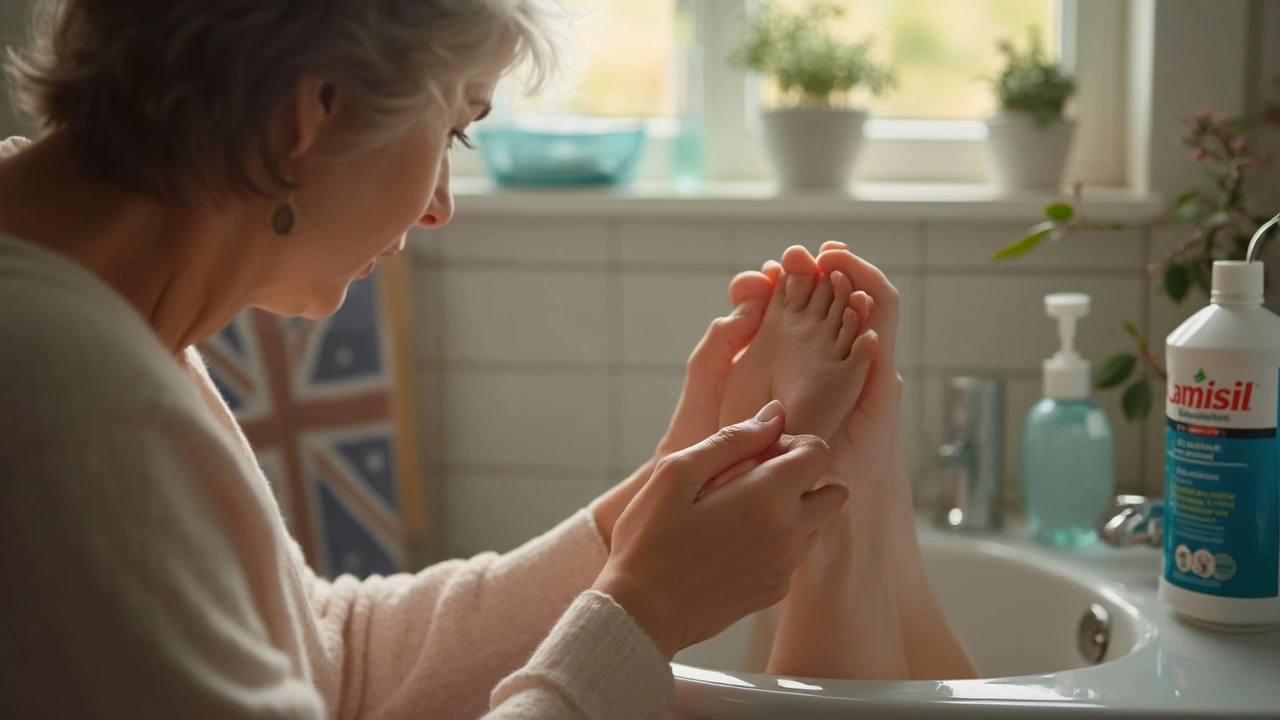Terbinafine: what it treats and how to use it
Terbinafine is an antifungal medicine used for skin and nail infections. You’ll see it as a cream or as an oral tablet (often called Lamisil). Topical terbinafine treats athlete’s foot and ringworm. The oral form treats stubborn nail fungus and deeper skin infections that creams can’t fix.
How terbinafine works and common dosing
Terbinafine blocks fungal growth by stopping the fungus from making its cell membrane. For skin infections, a 1% cream is usually applied once or twice daily for 1–4 weeks depending on the infection. For nail fungus, adults typically take 250 mg by mouth once daily. Fingernail courses often run 6 weeks; toenails usually need about 12 weeks. Nail treatment takes time — nails grow slowly, so you might not see full improvement for months.
Side effects, interactions, and safety tips
Most people tolerate topical terbinafine well — mild redness or irritation can happen. Oral terbinafine causes more side effects: nausea, stomach pain, headache, and taste changes (sometimes a reduced or altered sense of taste). Some people notice skin rash or fatigue. Rare but serious issues include liver injury and severe skin reactions. If you get yellowing of the skin or eyes, dark urine, severe stomach pain, or unexplained tiredness, stop the drug and contact a doctor right away.
Terbinafine can affect liver enzymes, so doctors may check liver tests before and during treatment if you have liver disease or drink a lot of alcohol. It can also interact with medicines processed by the liver enzyme CYP2D6 — think some antidepressants, beta-blockers, and certain pain meds. Tell your clinician about all prescriptions, herbal products, and supplements you take.
Pregnancy and breastfeeding: oral terbinafine is usually avoided during pregnancy. Topical use might be allowed but check with your provider. If you’re breastfeeding, ask your doctor whether to pause treatment or switch to a different option.
Don’t stop oral treatment early because the fungus may come back. Nail treatments often need follow-up visits to see if the infection is clearing. If topical treatment fails for a skin infection or the infection returns quickly, an oral course may be needed.
Alternatives include oral itraconazole or fluconazole, and prescription topical options like efinaconazole or ciclopirox for nails. Which one is best depends on the infection, your health, and potential drug interactions.
Questions to ask your doctor: Do I need baseline liver tests? How long will I need treatment? What are the signs I should stop the drug? Clear answers help you use terbinafine safely and get better results.

Lamisil: Your Guide to Treating Fungal Infections Effectively
Ever wonder how to deal with those stubborn fungal infections lurking around your toes or fingernails? This article breaks down everything you need to know about Lamisil, from how it works to tips for using it right. We’ll cover who should use it, what side effects to watch out for, and why it’s one of the most trusted antifungal medications on the market. Get the inside scoop on avoiding recurring infections, see real-world tips, and learn if Lamisil is a fit for your specific situation. All you need to make informed choices—explained in simple, practical terms.
Read More